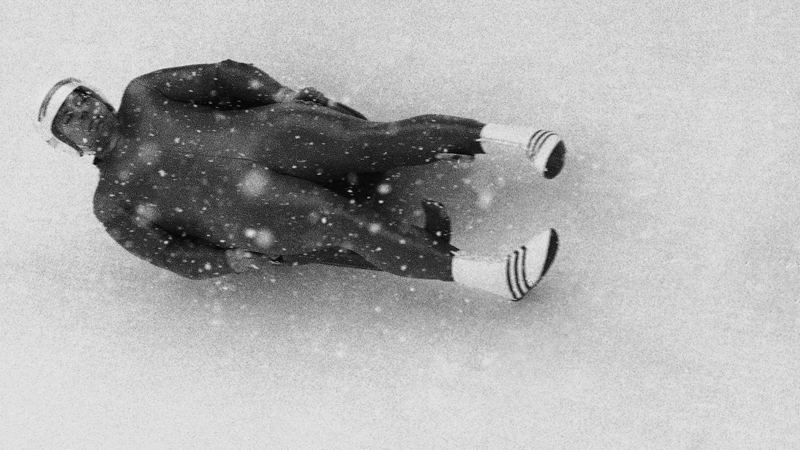
c/o repeatingislands.com
Early in 1983, George Tucker was a PhD candidate at the University. He spent his days studying physics, using a laser to measure the oxygen isotope ratios in nitrous oxide. Then he decided that was not exciting enough. The same time the following year, he was hurtling down an ice slide on a metal sled in host city Sarajevo, competing in that year’s Olympic games. His appearance in Yugoslavia that year marked the first time an athlete from the Caribbean would participate in the Winter Olympics, paving the way for the more widely known Jamaican bobsled team of Disney’s Cool Runnings, in addition to the four athletes hailing from Caribbean countries in this year’s competition in PyeongChang.
Tucker did not grow up with dreams of luging or even participating in the Olympics. In fact, he had little interest in athletics. Born in Puerto Rico to American parents and raised primarily in upstate New York, his nightly view of the stars captivated him from an early age. He quickly became passionate about the stars, astronomy, and light pollution, something he has actively resisted by helping to designate dark sky sites, which preserve places with clear views of the cosmos. This led him to pursue a degree in astronomy, but upon realizing the shortage of jobs in this field in the United States, he returned to school to get his doctorate in physics.
Tucker’s interest in competing in the Olympics began in 1976, when Puerto Rico’s basketball team almost beat the heavily favored United States team in the second game of the tournament. The star of the game, Puerto Rico’s Alfred “Butch” Lee Jr., was also born in Puerto Rico to American parents and raised in New York, just like Tucker. Tucker told Outside Magazine how Lee would inspire him later on.
“I had never thought about Puerto Rico and the Olympics because I thought, well, I live in the U.S.,” Tucker said. “So I kept that in the back of my mind.”
In 1980, Tucker was living in Albany, N.Y. when the Olympics came to Lake Placid. He drove with his friends to the training facility for a chance to see some of the world’s best athletes in action and watched practice runs on the luge track. He described watching an Olympian practice their launch to Outside.
“Well, he jumped a couple of times, then he came down and landed on the ice, and smashed his head on the ground,” Tucker told Outside. “A friend turned to me and said, ‘Now there’s the sport for you.’”
Even then, he had no plans to pursue the sport. It wasn’t for another three years, when he was deep in his physics studies, that he decided to get a membership to the United States Luge Association. This gave him access to the Lake Placid training track.
Then, with Lee in mind, Tucker wrote to Puerto Rico’s Olympic Committee. He asked whether he could represent the territory in the next Olympics if he became good enough at the sport. He did not think anything would come of it and was at most expecting a rejection letter he could show off for laughs.
He trained through the winter, but was far from a natural-born luger. He quickly fell behind the other novices and crashed his sled more times than he would complete a run. Still, he was not deterred and planned to keep training in the spring until warm weather melted the track, making it impossible. Then, the Puerto Rican Olympic Committee responded.
“Wonderful news,” Tucker recalls the letter reading to Outside. “You are entered to compete in the 1984 Winter Olympics in Sarajevo. You will be the first Puerto Rican Winter Olympian.”
Though he had every reason to back out, he did not, and instead recommitted himself to training the following December. With help from the United States luge team, he traveled to Sarajevo that January to train with the Yugoslav team.
As the first Caribbean winter Olympic athlete and a clear underdog, his story quickly spread and he became a fan favorite. Sports Illustrated described him as “the press’s favorite loser” and recalled how “he got a lot more press in the States than Paul Hildgartner, the Italian who won the gold medal.”
His passion for the sport did little when it came time to compete. He did not have high expectations for himself and was clearly there for the experience rather than athletic achievement. His four runs took a total of just over three minutes and 33 seconds, and he finished in last place.
Despite this, he returned to the next Winter Olympics in 1988, which were held in Calgary, in the Canadian province of Alberta. This time, he was joined by another Puerto Rican luger, Raúl Muñiz. Muñiz was also Puerto Rico-born and raised in New York. The Puerto Rican team was rounded out by seven additional athletes who competed in the biathlon and alpine skiing. Tucker and Muñiz went into the games with a shared goal of not finishing last, and they delivered, though still did not come close to medal contention.
Tucker was Wesleyan’s first Olympic luger; who will be the next?
Rose Griffin can be reached at rgriffin@wesleyan.edu.